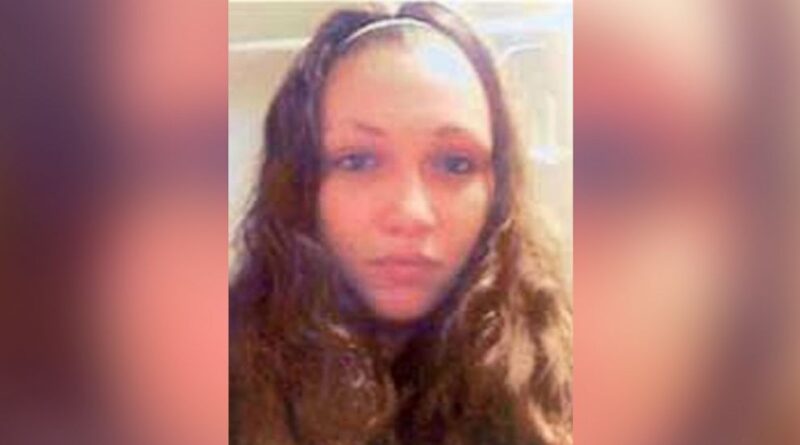Ashley Summers Disappeared in Cleveland Ohio
Ashley Nicole Summers was born in mid-June 1993 and grew up in a tight-knit family on Cleveland’s west side. She was the only daughter of Jennifer Summers, a devoted single mother who balanced multiple jobs to support Ashley and her two younger siblings. Despite the challenges of living in an urban neighborhood plagued by crime and economic hardship, Ashley thrived. She was known for her warm smile, vivid imagination, and a love of art that manifested in colorful drawings she often shared with classmates. Close relatives recall family gatherings bustling with laughter and home-cooked meals, punctuated by Ashley’s playful teasing of her cousins. She attended a local middle school, where she excelled in English and showed an early talent for storytelling. In her spare time, she volunteered at community events and was eagerly planning her first job at a neighborhood pool for the coming summer. Her mother described her as mature for her age—wise beyond her fourteen years—and fiercely loyal to her friends.
The Day She Vanished
On July 4, 2007, Ashley joined a small gathering at a cousin’s home near West 96th Street and Madison Avenue to celebrate Independence Day. According to eyewitness accounts, she splashed in the pool, chatted with friends about summer plans, and showed off a new tattoo: a red heart emblazoned with the name “Gene,” her boyfriend’s. Sometime in the late afternoon, Ashley and her great-uncle, Kevin Donathan, had a heated argument. Unhappy with the tattoo, he angrily confronted her and reportedly smashed her cell phone to pieces, leaving her unable to call anyone. Witnesses last saw her on a side porch around 6:00 p.m. as she gathered her belongings to head home. By nightfall she had not returned, yet no alarms were raised immediately because Ashley often stayed overnight with extended family. It wasn’t until July 11—seven days after the gathering—that her mother, concerned by unreturned calls and Ashley’s absence from school, officially reported her missing.
Immediate Response and Initial Classification
Upon receiving the missing-person report, Cleveland Police initially categorized Ashley’s case as a juvenile runaway. This classification reflected both her history of spending unscheduled nights with relatives and the family tensions documented in recent weeks. Neighborhood patrols canvassed local streets, while flyers featuring Ashley’s childhood photos circulated through area businesses and community centers. Friends of the family organized informal search parties, scouring parks and vacant lots. Despite these efforts, official police resources were limited by the runaway designation: without clear evidence of foul play, agencies prioritized reported abductions and violent crimes. Jennifer Summers, however, insisted that her daughter would never run away permanently. She appealed publicly through local radio stations and church gatherings, urging anyone with information to come forward. The community responded with prayers and sporadic tips, but none yielded meaningful leads.
FBI Involvement and Expanded Investigation
In early 2008, nearly a year after Ashley’s disappearance, the National Center for Missing and Exploited Children issued an alert that prompted the FBI to assume jurisdiction. Agents from the Cleveland Field Office assembled a specialized task force to reassess the case. They reviewed initial police reports, re-interviewed witnesses, and examined crime scene evidence—scraps of cell-phone debris, keystones of her life scattered at the poolside. The team also deployed the Evidence Response Team to photograph and collect prints from the gathering site, though environmental exposure limited forensic yields. Analysts pored over regional crime databases to identify any abduction patterns or links to serial offenders. Early on, investigators briefly explored a possible connection to the Ariel Castro kidnappings because of geographic proximity and victim age profiles, but no forensic or testimonial evidence tied Ashley to that case. The FBI’s Child Abduction Rapid Deployment (CARD) unit also conducted a ground search, mapping routes from the gathering location to major transit arteries, hoping to identify where she might have been taken.
Key Leads and Age Progression Efforts
Over the years, investigators pursued several unconfirmed sightings. One month after the disappearance, a call to the family—believed mistaken for Ashley—suggested she was safe elsewhere; the call was traced to no definitive source. In 2015, a Rhode Island ATM photo showing a young woman resembling an age-progressed image of Ashley was thoroughly vetted and ultimately ruled out. Recognizing that adolescent faces change dramatically, the FBI partnered with forensic artists in 2018 to produce updated composites depicting Ashley at ages 20, 25, and 31. These images circulated on billboards, social media platforms, and national missing-persons databases. Despite widespread distribution, tips remained scarce and transient. Agents compiled every plausible sighting into a centralized database, applying geographic profiling to prioritize follow-up locations. Despite advances in facial recognition and public awareness, Ashley’s trail grew cold as years passed without verifiable evidence.
The Role of Family and Community
Throughout the investigation, Jennifer Summers maintained a grayscale balance of hope and despair. She enlisted local churches to hold candlelight vigils each anniversary and partnered with nonprofit organizations to drive awareness campaigns. The Cleveland community turned out in solidarity—in 2014, a mural bearing Ashley’s likeness and tattoo design was unveiled near her last known location. Local students crafted postcards urging viewers to “Bring Ashley Home.” Social-media groups dedicated to her case rose and fell as membership waxed and waned, sometimes resurfacing when cold-case podcasts or national news outlets highlighted her story. Family members and friends remained active participants in FBI-led interviews and strategy sessions, providing psychological profiles, diaries, and school records to flesh out her habits and preferences. These insights guided investigators’ understanding of her likely movements and emotional state at the time of disappearance.
Challenges and Theories
Investigators confronted multiple obstacles. The rainy, hot weather on July 4, 2007, had washed away potential footprints and degraded latent prints on glass surfaces. Ashley’s broken phone hampered cell-tower triangulation, eliminating a key digital lead. The casual social setting—no CCTV cameras, dimly lit side alleys—provided few clear records of her departure. The family-centric dynamic that delayed her missing-person report also stalled early investigative momentum. Over time, theories ranged from opportunistic abduction to voluntary flight triggered by family conflict. Some speculated on human-trafficking involvement, though no corroborating evidence emerged. The conviction of her great-uncle on unrelated sex-offense charges in 2019 prompted renewed scrutiny but produced no substantiation linking him to her disappearance. Each dead end intensified the investigation’s complexity and underscored the fragile nature of missing-child cases.
Continuing Efforts and Current Status
Today, Ashley Summers’s case remains active. The FBI and Cleveland Police periodically review the file, integrating new techniques in forensic genealogy and digital analytics. Cold-case units re-examine physical evidence held in storage, applying improved DNA recovery methods where possible. Investigators continue to monitor nationwide databases for unidentified persons matching her age-progressed profiles. Annual public appeals are coordinated with Missing in America Project events, where volunteers fan out across neighborhoods to drop flyers and speak with residents. Meanwhile, Jennifer Summers advocates for legislative reforms to classify missing-teen runaways as high priority, hoping that policy shifts will prevent similar slowdowns in future cases. As of this writing, no confirmed trace of Ashley has surfaced. Yet each year brings incremental advances in technology and a steadfast resolve from family, friends, and law enforcement to solve one of Cleveland’s most enduring mysteries.
Discover more from City Towner
Subscribe to get the latest posts sent to your email.




